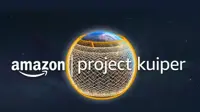Mars may not be habitable due to toxic soil: study
07 Jul 2017
Researchers from Edinburgh University in the UK have found that when certain chemicals on Mars react with ultraviolet radiation from the sun, a toxic substance called perchlorate that can kill some bacteria, is formed.
According to commentators, this should come as good news for those worried about planetary protection that informed any interplanetary mission -prevention of biological contamination of a celestial body from spacecraft visiting from earth.
In the 1970s two Viking landers had taken samples of Martian soil and heated them to look for organics, but all they found were chlorine compounds attributed to contamination.
However, subsequent research had suggested that the Viking probes' heat-treatment might have generated the chlorine compounds from naturally occurring Martian organics, and might have destroyed them in the process.
Perchlorates ''could sit there in the Martian soil with organics around it for billions of years and not break them down, but when you heat the soil to check for organics, the perchlorate destroys them rapidly,'' explained Chris McKay, a scientist with NASA's Ames Research Center, upon the release of a 2010 study he coauthored that reanalyzed the results of Viking's tests for organic chemicals in Martian soil.
Now, researchers Jennifer Wadsworth and Charles Cockell from Edinburgh University's UK Centre for Astrobiology report that it did not need special heating instrument on board a spacecraft to set off the reaction from perchlorates, it could happen naturally from the sun.
The researchers exposed soil from the Atacama Desert containing perchlorates to UV light in environmental conditions much like those on Mars. Their experiments revealed that when magnesium perchlorate was exposed to UV radiation similar to that on Mars, it became capable of killing bacteria much more effectively than UV light alone.
Wadsworth and Cockell write, "the surface of Mars is lethal to vegetative cells and renders much of the surface and near-surface regions uninhabitable."
However, actual cells on Mars, do not fare as poorly, as liquid water does not pool on the surface.
To simulate Martian conditions more closely, the researchers next deposited the cells within simulated rocks - actually silicate disks - in a dry perchlorate environment.
The cells fared better against radiation, with better survival rate than in the experiment that resulted in 100 wipeouts.









.webp)














